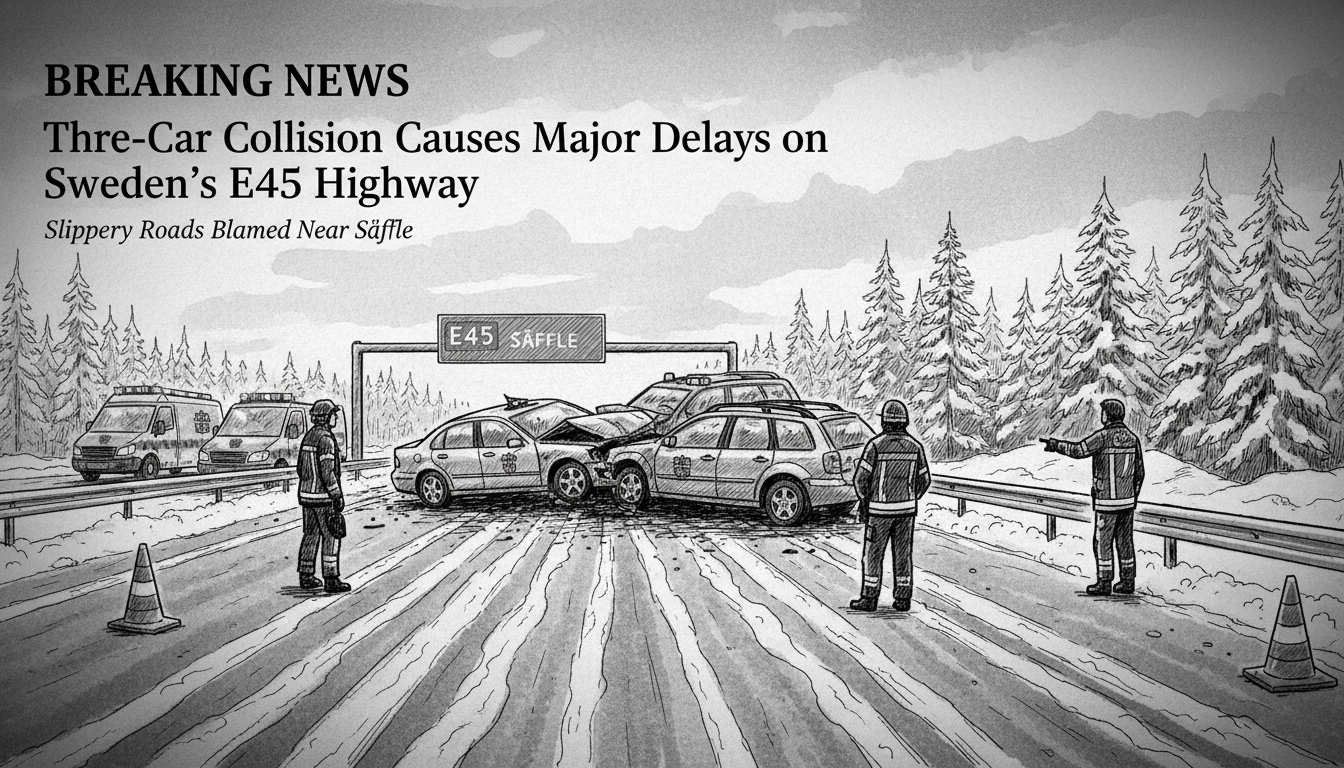A serious multi-vehicle collision has shut down part of Sweden's E45 highway near Säffle municipality. Three passenger cars were involved in a chain-reaction crash during afternoon hours.
Emergency services received the alarm at 2 PM local time. Rescue teams, ambulance crews, and police officers all responded to the scene. The vehicles ended up on the roadside following the rear-end collision.
Road conditions appear to have played a role in the accident. A rescue operator from the Bergslagen region confirmed the road surface was slippery at the time of the incident. This highlights the ongoing challenge of maintaining safe driving conditions on Swedish highways during transitional weather periods.
Traffic authorities report significant disruptions to highway flow. The E45 serves as a crucial transportation artery through western Sweden, connecting major cities and industrial centers. Such incidents demonstrate the vulnerability of Sweden's transportation infrastructure to weather-related disruptions.
Sweden has invested heavily in road safety improvements in recent decades. The country's Vision Zero initiative aims to eliminate traffic fatalities and serious injuries. Yet accidents like this E45 collision show how quickly conditions can deteriorate on major highways.
International drivers should note that Swedish highways often require different driving techniques than those in other countries. Sudden weather changes can create hazardous conditions even on well-maintained roads. Local authorities frequently issue warnings about black ice and slippery surfaces during transitional seasons.
The economic impact of highway closures extends beyond immediate traffic delays. Sweden's export-dependent economy relies on efficient road transport for goods movement. Incidents like this E45 collision can disrupt supply chains and delivery schedules.
Emergency response times in rural Swedish areas remain a concern. While Sweden has excellent emergency services, the vast geography means response times can vary significantly. The Bergslagen region where this accident occurred covers substantial rural territory.
What happens next for the drivers involved? Swedish traffic accident procedures typically involve thorough investigations to determine exact causes. Insurance claims processes then follow, which can be complex for international drivers unfamiliar with the Swedish system.
This incident serves as a reminder that even Sweden's modern highway network requires constant vigilance from drivers. Weather conditions can change rapidly, and defensive driving techniques remain essential for safety on Nordic roads.

